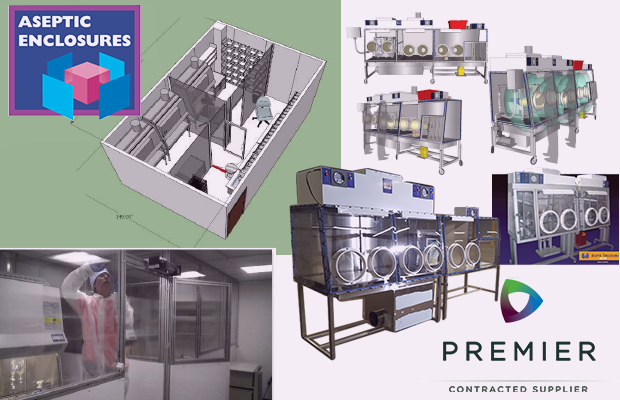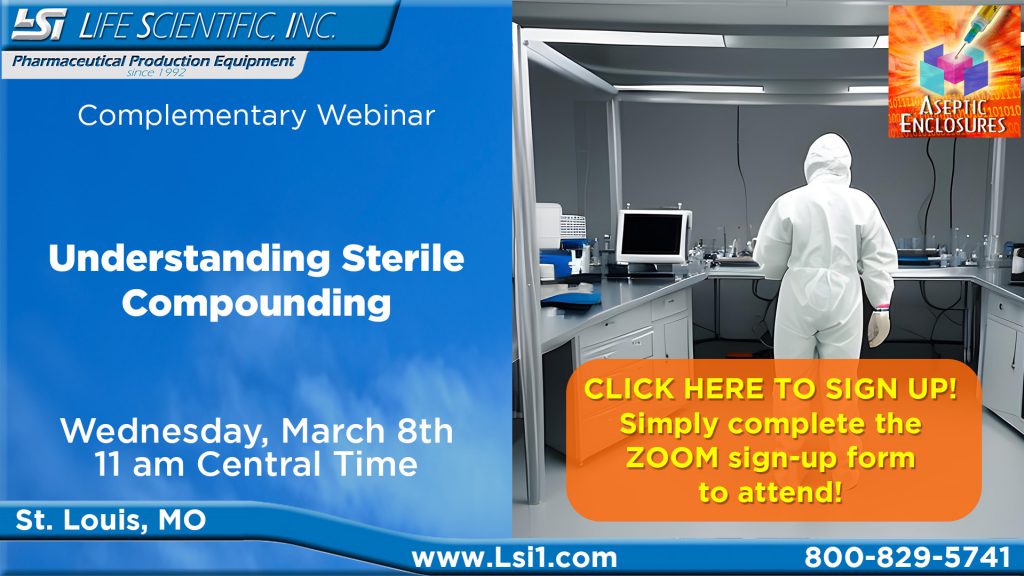With two in house agreements with Premier, Inc. Aseptic Enclosures now allows Premier members, at their discretion, to take advantage of special pricing and terms pre-negotiated by Premier.
The base of the supplying contracts covers a wide range of Primary Engineering Control Devices (I.V. Hoods, Isolators, Bio-Chemical Hoods, and Laminar Work Benches) in addition to Pharmacy Planning and Design services in order to meet USP Chapters <797> and <800> compliance.
Aseptic Enclosures Primary Engineering Control Devices (I.V. Hoods) contract offers a wide range of custom equipment to meet USP 797 and USP 800 compliance, from compounding aseptic isolators to hoods and clean benches, at a pre negotiated price which is among the most competitive pricings on the market at the moment.
Having as broad of a product line as we do, provides us the opportunity to look at solutions from multiple potential platforms to secondarily help create an environment that is ergonomic, functional, efficient and cost-effective.
Parenteral production has been our company’s focal points since its founding in 1992. First, in cGMP compliant FDA registered pharmaceutical manufacturing facilities, and now, since 2005, the “end user” Pharmacy Sterile Compounding segment.
Aseptic Enclosures first entered into the hospital pharmacy market with the introduction of our CAI “compounding aseptic isolators” and CACI “compounding aseptic containment isolators”. Since that time our product line has grown to be the most comprehensive range of solutions for USP 797 and USP 800 compliance.
How our Primary Engineering Control solutions provide the safest work environment:
protecting all pharmacy personnel from exposure to dangerous chemicals, Under the current regulations as well as the upcoming USP <800> the hazardous materials are usually ordered from a wholesaler or manufacturer and received in the pharmacy. There must be a designated area inside of the pharmacy where all incoming supplies are staged when entering the facility.
All hazardous items should be labelled as such and should be distinguishable from the other materials in the same receiving batch. After this all HDs should be stored separately from non hazardous chemicals.
But there is always the risk that vials or bottles might crack or break during transportation. A scenario like this occurred at a facility we encountered with, and ever since we are extremely sensitive on how containers should be handled when coming in from shipping and receiving.
The pharmacy personnel cannot really know what is inside of the transportation box, how was it handled till entering the pharmacy and what state and condition the vials and bottles inside are. A cracked vial or opened bottle may be spilled inside the container and posing an even bigger exposure risk. By opening boxes that are coming in from shipping and receiving even under the revised USP <800> the operator is still at great risk to become exposed to any affluent that is coming from a box with broken or open vials or bottles.
We consider that the damage repair measures and the protocol of handling damaged items as if there was a hazardous drug spill, are not sufficient enough when trying to protect the pharmacy personnel in shipping and receiving.
When the technician goes in, and opens the box, even with the proper protective gear on, it doesn’t really matter if it’s neutral or negative pressurized room, since the person is still getting exposed to any affluent that is coming of the hazardous material toad.
One of the major risks associated with opening a container in an open room or Laminar Air Flow Open Hood, can cause direct exposure to hazardous materials that are enclosed inside the lab toad.
On one of our site visits while performing a cleanroom gowning & garbing training, we have encountered a pharmacy technician that has been placed under medical surveillance for the rest of his life, due to first air exposure to hazardous materials, that happened when opening a box that came in from shipping and receiving and contained broken vials filled with hazardous chemicals.
As a solution to this issue, We at Aseptic Enclosure has developed the Stage Thru 800, a negative pressure, isolated, Pass-through, CVE (Containment Ventilated Enclosure) device that is intended to provide a significantly safer way for incoming shipments to be staged and prepped for entry into the hazardous drug compounding area.
This equipment is designed to provide a protective barrier for the operator. It is not iso-classified. It is not appropriate for any type of aseptic operation. The StageThru removes the risk of exposure to Hazardous materials of the operator that is handling incoming shipping containers.
The main purpose of the StageThru 800 is to make the staging and opening boxes that are coming in from shipping and receiving a safe process.
Get in touch with us if you’d like to learn more about our primary egineering control or our XLTC800 series isolation systems. A great side by side comparison of the performance of our XLTC800 and the minimum requirements of the USP 800.
As both USP <797> and USP <800> are anticipated to become official on December 1, 2019, We strongly recommend to all Premier, Inc. GPO members to start the compliance process as soon as possible as compliance projects can often exceed the deadlines set to complete.
Please contact our Premier GPO project manager at 1-800-418-9289 for consultation on our Primary Engineering Control Devices
About Premier, Inc.
Premier, Inc. helps hospitals accelerate performance on both clinical outcomes and supply chain costs. Premier is a healthcare alliance entirely owned by more than 200 of the nation’s leading not-for-profit hospitals and healthcare systems. These organizations operate or are affiliated with nearly 1,500 hospitals and more than 42,500 other healthcare sites.
Premier Purchasing Partners provides an array of services supporting health services delivery including group purchasing totaling more than $27 billion annually in supplies and equipment purchasing, as well as supply chain and clinical performance improvement services.
Premier Healthcare Informatics offers performance measurement, benchmarking, and reporting products and advisory services supporting quality improvement.
Premier Insurance Management Services helps hospitals manage insurance costs and improve risk management and claims capabilities. Headquartered in San Diego, CA, Premier has offices in Charlotte, NC and Washington, DC. For more information, visit www.premierinc.com.to know more about their primary engineering control devices


